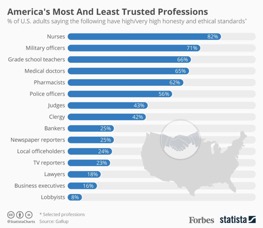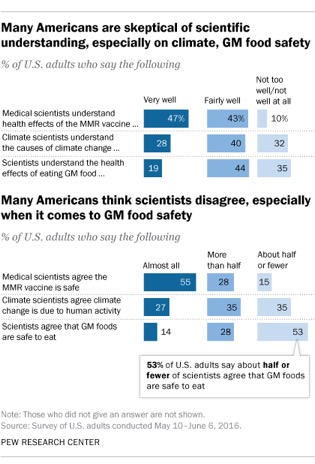Explore. Climb. Knit. The secrets of good science writing with Jo Chandler
If you want to be a great science writer, you’ve got to explore. Then you need to put a fence around it and etch out your landscape. Yes, you need character. You’ve got to nail it, you’ve got to knit it, you’ve got to kill your darlings and drown your kittens. But most of all, you’ve got to be brave enough to climb the ladder. All the time remembering that, hey, it’s not about you.
These are some of the ingredients of the special sauce that takes science writing from a Tuesday-night meal of information-sharing to a Michelin-starred story of science that is engaging, powerful and connects deeply with a reader. With the (much appreciated) help of the Peter Pockley Grant for Professional Development in Investigative Journalism, I travelled to the Melbourne offices of The Monthly to hear Walkley-award winning journalist Jo Chandler share her secrets for good science writing with a small group of aspiring science journalists, communications professionals and scientists.
Here’s a taster of what I learnt from Jo’s workshop, as well as a few other complementary morsels from some of the other masters of their craft.
Explore. Then put a fence around your story and etch out your landscape
The first stage of storytelling, Jo explained, is exploration. Is there some interest around a particular piece of research? Journalist Michelle Nijhuis uses Kathleen Jamie’s phrase ‘a turning in my head’ to describe this early stage of developing a story idea; the feeling that there might be something to say about an experience or topic. This is followed by what Jo called the ‘long-haul phase’ of gathering and organising information (aka reporting): searching for and bringing together clippings, scientific papers, facts, scenes, details, statistics and characters that need to be sifted, stacked, rated, and then tossed or filed. At this point, a good writer will take a step back and focus. What is the story about? Jo advised us to resist the urge to tip the contents of our notebooks onto our readers. Now’s the time to put a fence around your story and decide its boundaries. Then you can begin to etch out the landscape you want to lead the reader through by plotting the story’s beginning, middle and end, and thinking about how to draw the reader into this landscape using powerful opening scenes and interesting characters.
Yes, you need character
Scientists are concerned with the why, the what, the where and the how of their research. But the who? When you’ve been trained to write about your own work as if you’re a passive, emotionless observer, thinking of yourself as a ‘character’ in a story may, for some, seem anathema. Yet while people may be fascinated by super blue blood moons and fishes that live in a sea cucumber’s anus, what people are most fascinated by is other people. Finding great characters—or revealing your own—is a powerful way of drawing readers into a story, particularly when the central topic is not the sort of thing that usually captures the public’s imagination. Jo used herself as the central character in ‘Gut feelings’, where she divulged (with much comic relief) the sad state of her own microbiome after being treated with potent antibiotics for multi-drug resistant TB. Another masterclass in using character to lead readers into a story on a subject they may never have heard of, let alone care about, is Ed Yong’s ’How a guy from a Montana trailer park overturned 150 years of biology’, a story about symbiosis in lichens.
Nail the essential bits to the wall, then knit together a tight story structure
All this talk of landscape and character is all well and good, I hear you say, but this is science, so what about the facts? Jo suggested that, when you’re ready to write, decide the key facts, key quotes and key scenes that are essential to the story and then ‘nail these bits to a wall’ (write them all down in one place) so that, no matter how many times you revise your piece, you can make sure that these essential elements have been retained. Then it’s time to knit your story together with a tight and compelling structure. Structure is the connective tissue that leads the reader through your key facts, quotes and scenes; it gives context to events or scientific findings and helps the reader digest difficult pieces of information. Good structure creates tension. Jo used the analogy of a good movie: the mood might shift between quiet and loud but it’s never ‘dead’; the story could move back and forth in time; the camera can pan across the landscape and then zoom in for a detailed close-up before panning back out again. The scene changes. The point-of-view shifts between characters. The audience is given a hint of what is to come. Kathryn Schulz’s essay ‘The really big one’ is a powerful example of how great structure creates a tension-filled story about an event that hasn’t even happened (yet).
Kill your darlings and drown your kittens
That great quote from your main character that’s hilarious, but doesn’t illustrate a key point? Kill it! That clever metaphor that will only make sense to diehard fans of Red Dwarf? Drown it! Good writing means being (at times ruthlessly) selective about what you edit out, even though you really, really liked that bit.
And she’s climbing the ladder…of abstraction
Jo explained the ladder of abstraction as a tool that writers can use to organise a story so that it conveys both information and meaning, and appeals to the senses as well as the intellect. The ladder rises from the most concrete details of a story (the facts), up through increasingly broader and more abstract categories. Good writers move up and down the ladder, giving their readers a view that varies between the specific and the comprehensive; between detail and generalisation. In his book Storycraft, Jack Hart writes that reports convey information and emphasise outcomes, but stories convey experience and have meaning. He observes that anybody who works in an institutional setting deals mostly with information, and all this reading and writing of reports can trap you on the middle rungs of the ladder of abstraction, crippling your ability to tell a good story. As a former scientist making the transition to science writer, I know how terrifying it can be to climb up onto those top rungs. But now that I’m beginning to conquer this fear, I’m finding the view from the top magnificent.
It’s not about you
In ‘A manifesto for the simple scribe – my 25 commandments for journalists’, Tim Radford writes that the only person you are writing to impress is someone hanging from a strap in the train on their daily commute, who will stop reading in a fifth of a second, given the chance. Even science writers at the top of their game, Jo included, remind themselves that ‘nobody has to read this crap’. So, to paraphrase Alan Alda, forget thinking about what you need to say, and write about what your reader wants to know.
Follow Viki on Twitter @VikiCramer or at her website www.vikicramer.com.au


